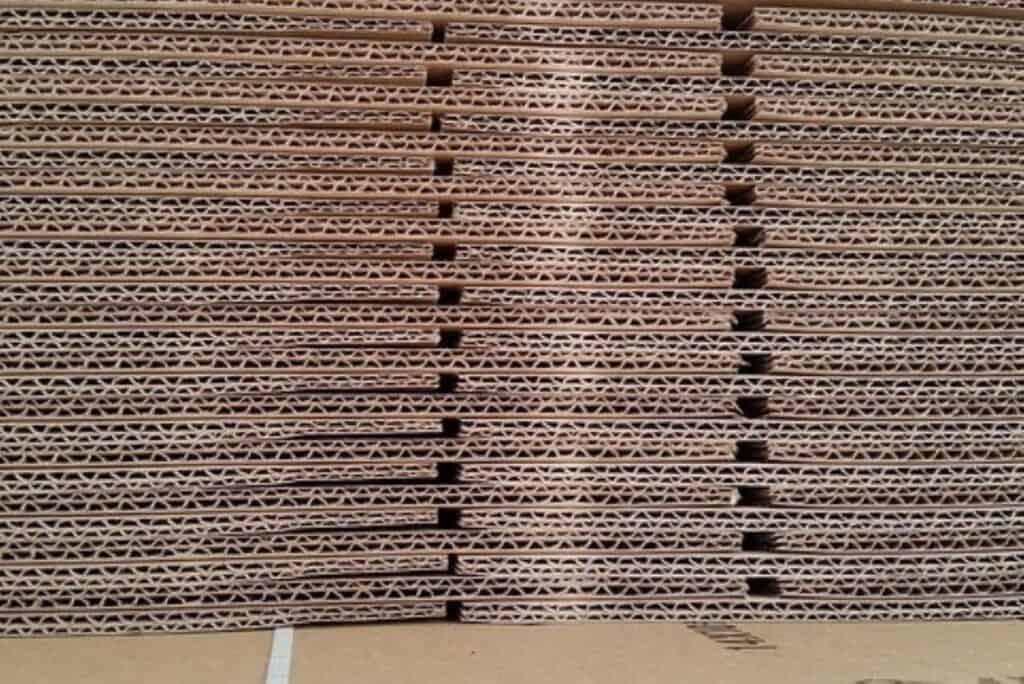Need to know how to pack fragile items to prevent damage during your move? From glassware to precious heirlooms, this guide provides straightforward advice on securing your items safely in boxes. Discover the art of packing with suitable materials, the specifics of wrapping delicate items, and tips for avoiding common pitfalls. Get ready to transport your valuables with confidence, all while ensuring each recommendation is clear, direct, and useful.
Key Takeaways
- Use high-quality supplies, like sturdy double-walled boxes, bubble wrap, packing peanuts, and heavy-duty tape, to effectively protect fragile items during a move.
- Master wrapping techniques and packing strategies, ensuring that items are individually protected, boxes are carefully layered, and heavy items sit at the bottom.
- Clearly label boxes as ‘FRAGILE’ and strategically load and unload them, keeping fragile items on top and secure in the moving vehicle to prevent damage.
Gathering Your Packing Arsenal

When the moving day looms, your first line of defence is to amass an arsenal of packing tools that will stand between your fragile belongings and the perils of transit. It’s not just about throwing things into a box and slapping on some tape; it’s a fine art. You’ll need more than just cardboard and good intentions to protect your delicate items. From sturdy boxes to bubble wrap fortresses, selecting appropriate packing materials is not just a suggestion, it’s a necessity for the safeguarding of your valuable and breakable items.
Prepare to embark on this crucial phase of your moving adventure with the right supplies that promise safety and peace of mind.
Choosing Quality Boxes
In the realm of packing, the box is king. But not just any cardboard throne will do for your delicate belongings. You need the sturdiest of shelters – double-walled, corrugated fortresses that can withstand the pressures of travel and protect the precious cargo within. These quality boxes are the foundation of your packing strategy, ensuring that your fragile items remain secure from the rough and tumble of moving day.
So choose wisely, for the box you select can be the difference between a treasured item’s survival and its untimely demise.
The Role of Bubble Wrap and Packing Peanuts
Imagine the gentle embrace of a thousand tiny cushions, each one ready to absorb the shocks and jolts of the journey. That’s the role of bubble wrap in your packing process – a protective layer that keeps your fragile items nestled safely. Then bubble wrap, paired with the space-filling prowess of packing peanuts, these materials work in tandem to:
- Fill voids
- Stabilize your treasures
- Ensure they remain immobile
- Insulate them from harm’s way
But be mindful of their use; too much cushioning could strain your boxes and put your items at risk.
Securing with Packing Tape
The final guardian in your packing process is the steadfast packing tape – the seal that binds and fortifies the haven you’ve built for your fragile items. This isn’t a job for the faint-hearted or the flimsy adhesive. Heavy-duty packing tape is a must, as it ensures that once sealed, your boxes will not betray their contents during the tumultuous journey.
Apply it generously, reinforce the bottom, and wrap it securely around your bubble-wrapped treasures to prevent any unwelcome openings. With the right tape and technique, you can rest assured that your fragile belongings are packed to endure.
Mastering the Art of Wrapping Delicate Items
Before the box, before the tape, comes the delicate dance of wrapping. Each fragile item requires a tailored approach, a unique combination of materials, and techniques to ensure it remains intact. Whether it’s the soft embrace of packing paper or the secure cocoon of bubble wrap, mastering this art form is essential for the safe keeping of your breakable treasures.
The wrapping you choose is the first line of defence, the protector against scratches, chips, and shattering. It’s time to become an artisan of the wrap and secure the fate of your fragile items with every fold and tuck.
Techniques for Glassware and Ceramics
Glassware and ceramics, with their brittle nature, demand an extra measure of care. Picture each piece individually swaddled in a soft blanket of packing paper, then ensconced in the cushioned embrace of bubble wrap. Small boxes become their sanctuary, minimising movement and maximising protection against the inevitable jostles of transport.
Even the slender stems of wine glasses deserve special attention, wrapped and secured to prevent the heartache of broken glass at your new abode. Pack these fragile warriors with precision, and they’ll survive to shine at your next toast.
Special Considerations for Picture Frames and Mirrors
When it comes to picture frames and mirrors, the stakes are high – one wrong move and you’re left with a mosaic of memories and reflections. Layer upon layer of protection is required, from cardboard backing to bubble wrap cushioning, ensuring that every angle is shielded from the trials of the move.
Plastic sheets offer a barrier against the elements, while corner protectors stand guard against the knocks that come with new thresholds. Wrap them wholly, handle them with reverence, and these fragile panes will reflect the care you’ve taken in their journey.
Strategic Box Packing Methods
With your fragile items securely wrapped, it’s time to turn your attention to the strategic chess game of box packing. This is where the battle for your belongings’ safety is truly won or lost. Each piece must be placed with intention, using the correct size box, and a thoughtful layering strategy to minimize movement and maximize protection.
As you begin to place your wrapped items into their cardboard chariots, remember that a well-packed box is like a well-plotted novel – every element serves a purpose, and every placement is crucial to the story’s success.
Layering the Bottom of the Box

Begin your packing tale by laying a foundation as strong and soft as a hero’s resolve. The bottom of the box must be cushioned to cradle your fragile items like a nest for newborn birds. This is where newspapers and bubble wrap come into play, creating a buffer zone that absorbs shocks and holds your items aloft above the rough ground of reality.
As you layer these materials, you’re not just filling space – you’re building a base of protection that will carry your delicate belongings through to their next chapter.
Heaviest Items at the Bottom
With a cushioned base in place, it’s time to introduce the heavyweights. The heaviest items take their position at the bottom of the box, anchoring the load and providing a stable foundation for the lighter, more delicate items to rest upon. Glasses and other breakables are arranged with the largest at the base, ascending to the smallest at the pinnacle, ensuring a balance that resists the tumbles of transit.
Smaller boxes are the arena for these heavy contenders, making them easier to manage and minimising the risk of internal avalanches.
Utilising Dividers for Organization
In the realm of packing, dividers are the unsung heroes, the silent sentinels that stand between your fragile items and chaos. These cardboard guardians keep your treasures compartmentalized, ensuring they stay in place and do not engage in a destructive dance during their journey. Glasses and stemware find solace in special boxes with individual slots, a luxury that prevents clinking and potential cracking.
Soft felt dividers offer a gentle touch for your most delicate possessions, maintaining order and preventing the peril of overpacking. With dividers, you’re not just packing; you’re curating a safe passage for every fragile piece.
Sealing and Labelling for Safety
The final act of securing boxes with your fragile items comes with a seal and a sign. A box well-packed is only as safe as its seal is strong.
Here are some tips for sealing your boxes securely:
- Use heavy-duty packing tape to ensure a strong seal
- Apply the tape along all the edges of the box, making sure it overlaps onto the sides
- Use multiple layers of tape for added strength
- Press down firmly on the tape to ensure it adheres properly
By following these tips on how to pack fragile items, you can ensure that your fragile items are well-protected during transit.
And then comes the sign – a label, clear and bold, that speaks to all who handle your box: ‘Here lies something precious; handle with care’. This is the banner that ensures your fragile items are treated with the respect they deserve throughout their voyage.
Ensuring a Tight Seal
A tight seal stands as a bulwark against the trials of transport, a steadfast barrier that must hold fast. To achieve this, the surface of the box must be clean and clear, ready to bond with the adhesive might of the tape. The ‘H’ taping method – a strategic application along the centre seam and across the edges – is the battle plan for a secure stronghold.
To create a secure seal:
- Clean and clear the surface of the box.
- Apply tape along the centre seam and across the edges in the shape of an ‘H’.
- Extend the tape beyond the box’s edges.
- Press firmly to forge a seal that can withstand the rigours of the road.
With a tape dispenser as your ally, you’ll lay down a consistent defence that will keep your fragile items safe within their cardboard citadel.
Clear Labeling Practices
Crystal clear labelling is the compass by which your fragile items navigate the chaos of moving. Each box must bear the mark of its contents, a uniform signal that alerts all to its vulnerability. ‘FRAGILE’ stickers, prominent and unmissable, adorn the sides, serving as a beacon for careful handling and precise placement.
This is not merely a suggestion; it is a directive that ensures your fragile belongings are accorded the protection they require, every step of the way.
Preparing Large Fragile Items for Transport
The challenge escalates when the fragile items in question are not mere trinkets but large and unwieldy treasures. Antique wardrobes, grand pianos, and sizable electronics – these are the Goliaths of the moving world, demanding strategy and strength to ensure their safe relocation. Moving these giants is a task for the well-prepared, those who have gathered the right materials and summoned the aid of professionals in Croydon to navigate the complexities of their transport.
With careful planning, the right packing material, and perhaps a bit of muscle, these large fragile pieces can be prepared for packing delicate items…
With careful planning, the right packing material, and perhaps a bit of muscle, these large fragile pieces can be prepared for packing delicate items, ensuring they weather the journey to your new home with confidence. Additionally, packing fragile items properly can make all the difference in their safe arrival.
Disassembling Furniture Pieces
Disassembly is often the key to transporting large furniture safely. Armed with the right tools – screwdrivers, wrenches, and a clear plan – you can transform a cumbersome piece into manageable parts. Take inventory of every bolt and washer, label each piece meticulously, and capture the process in photographs to guide your reassembly efforts.
This systematic approach not only makes transportation safer but also ensures that the reassembling puzzle at your destination is one you can confidently solve.
Protecting Electronics in Transit
In the digital age, electronics are among our most treasured – and fragile – belongings. When shipping these items, it is important to wrap them with the utmost care. Here are some steps to follow:
- Envelop the item in a bubble wrap cocoon to provide extra protection.
- Cushion the item in a box with materials that can absorb shocks, such as packing peanuts or foam inserts.
- Seal the box securely with tape to prevent it from opening during transit.
By following these steps, you can ensure that your electronics arrive safely at their destination.
Secure and label these modern-day essentials, and they will emerge ready to power up in your new abode.
Loading and Unloading with Extra Care
The tape is set, the labels affixed, and each box packed with precision. Now comes the delicate ballet of loading and unloading, a dance where each step must be carefully choreographed to maintain the safety of your fragile items. The moving truck becomes a stage where weight distribution and secure fastening take the spotlight, ensuring that nothing shifts or topples during the journey.
Here, the strategy you applied in packing pays off, as the placement of each box is as crucial as the wrapping within.
Arranging Boxes in the Moving Truck
The loading of the moving truck involves several important steps to ensure the safety of your belongings:
- Start by placing heavy items against the walls of the truck to provide a stable base.
- Place lighter, fragile boxes on top of the heavy items, making sure to cushion them securely.
- Distribute the weight evenly on both sides of the truck to maintain balance.
- Use straps to secure larger items and prevent them from shifting during transit.
- Use corner protectors to safeguard fragile items from damage.
- Place non-slip mats on the floor of the truck to prevent boxes from sliding around. By following these steps and taking necessary precautions, you can ensure that your belongings are well-protected during the move.
Designate an empty space for them, away from the hulking shadows of heavier items, ensuring they arrive at your new location in the same condition they left. By doing so, you’ll effectively utilize empty spaces in your packing process and fill hollow items.
Unpacking Fragile Items at Your New Home
Finally, as you stand on the threshold of your new home, the unpacking process beckons. It is a moment of truth, where the meticulous care you took in packing is put to the test. Unwrap each item with the same tenderness and consideration you applied when you first encased it in its protective layers.
NOTE
Should you encounter the misfortune of broken glass or damaged goods, handle the situation with the appropriate tools and care, ensuring safety for your intact belongings and yourself.
Additional Tips for Keeping Fragile Items Safe
Beyond the basics, there are additional measures you can take to elevate the safety of your fragile items. Embrace the innovation of biodegradable packaging alternatives, such as PuffPack or recycled EcoNutz, which not only provide excellent protection but also care for the planet. Security packing tape can offer peace of mind, revealing any tampering and ensuring the sanctity of your sealed boxes throughout the move.
Consider the following tips when moving fragile items:
- Use climate-controlled transportation to protect against damaging temperature and humidity changes.
- Conduct a thorough inspection of your fragile items once you have settled in your new home.
- Place your fragile treasures in safe zones within your new home, away from high-traffic areas.
These tips will help ensure the safe transportation and placement of your fragile items during your move.
Summary
As you stand amidst your perfectly packed, sealed, and labelled boxes, take pride in the skill and care you’ve applied to ensure the safety of your fragile items. The journey from gathering the right packing arsenal to the strategic loading of the moving truck is one of meticulous preparation and attention to detail. Embrace these principles and you’ll not only protect your delicate belongings but also gain the confidence that comes with mastering the art of moving. Remember, the key to a successful move is not just in the strength of your boxes or the amount of bubble wrap you use, but in the thoughtfulness of your packing strategy. Carry these lessons with you, and may every move be as smooth and breakage-free as possible.
Frequently Asked Questions
What kind of boxes should I use for packing fragile items?
You should use strong, double-walled corrugated boxes to pack fragile items for maximum protection and resistance to pressure, preventing crushing. This will ensure that your fragile items stay secure during storage or transportation.
Can I use old towels and clothing instead of bubble wrap for cushioning?
Yes, you can use old towels and clothing instead of bubble wrap to cushion and protect your items during packing and moving, especially for larger or awkwardly shaped items. They can provide a soft and protective layer that adapts well to different shapes and sizes.
How can I prevent my fragile items from shifting inside the box?
To prevent your fragile items from shifting inside the box, use packing paper, bubble wrap, or packing peanuts to fill empty spaces and consider placing heavier items at the bottom and lighter items on top for added stability. No date
Should I label the boxes containing fragile items?
Yes, it’s essential to label your boxes as ‘FRAGILE’ to ensure they are handled with extra care during the moving process.
Is it better to pack a heavy fragile item in a large or small box?
It’s better to pack heavy fragile items in smaller boxes to reduce the risk of the items moving around and prevent overloading, which can lead to box breakage and damage to the contents.







